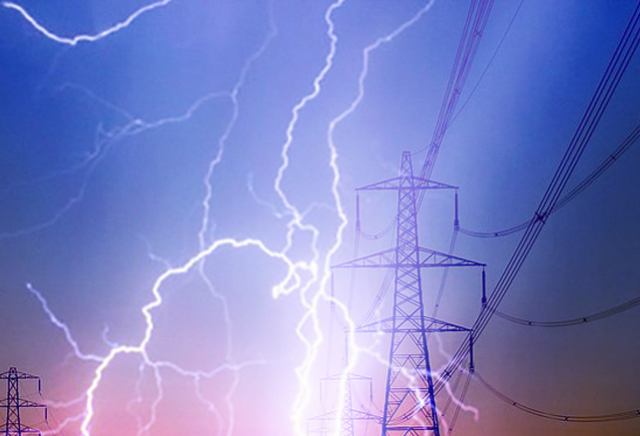Introduction
Lightning strikes pose a significant risk to structures, sensitive electronic systems, and life. In the Philippines, where thunderstorms are frequent, the need for reliable lightning protection systems (LPS) is essential. While the Philippine Electrical Code Part 1 (PEC 1 - 2017) does not provide a comprehensive design methodology for LPS, it outlines key safety requirements, bonding provisions, and references to internationally recognized standards such as NFPA 780 and IEC 62305. This article summarizes the relevant PEC 1 clauses related to the design, installation, and compliance of lightning protection systems.
1. General Scope and Standards
PEC 1 identifies the role of lightning protection primarily in terms of safety and grounding. It requires that any lightning protection system installed on a structure must be bonded to the electrical grounding system and be compliant with recognized standards.
Reference Standard:
- NFPA 780-2014: Standard for the Installation of Lightning Protection Systems
- IEC 62305 Series: Protection against Lightning
2. Grounding and Bonding Provisions for Lightning Protection
2.1. Section 2.10.10.2.5 – Grounding Electrode System
This clause mandates the interconnection of all grounding electrodes, including those for LPS, into a common grounding electrode system.
Key Requirement:
- Lightning protection electrodes must be bonded to the main electrical grounding system to eliminate potential differences that can cause side flashing.
Compliance: Required per NFPA 780 and ensures equipotential bonding.
2.2. Section 2.50.3.1 – Use of Grounding Electrodes
Specifies permissible grounding electrode types, including rod, pipe, or plate electrodes, which are commonly used in lightning protection systems.
2.3. Section 2.50.3.4.3 – Bonding of Lightning Protection Electrode
If a separate LPS is used, it must be bonded to the building's grounding system with a minimum of 6.0 mm² copper conductor.
Purpose: Prevents hazardous voltage differences and provides a low-impedance path for lightning currents.
3. Special Occupancies Requiring Lightning Protection
3.1. Section 5.20.3.6 – Health Care Facilities
Hospitals and similar facilities are advised to install lightning protection systems in accordance with NFPA 780, recognizing the critical nature of uninterrupted power and sensitive medical equipment.
3.2. Section 5.30.1 – Hazardous (Classified) Locations
In explosive atmospheres such as refineries or grain storage facilities, lightning protection becomes essential to eliminate ignition risks from direct or induced strikes. PEC 1 underscores the need for bonding, grounding, and surge protection in such installations.
4. Installation and Compliance Responsibilities
4.1. Section 1.1.1.3 – Qualified Electrical Practitioners
Only licensed professionals such as Professional Electrical Engineers (PEE) or Registered Master Electricians (RME) are permitted to design, install, or maintain lightning protection systems and their bonding connections.
4.2. Compliance Note:
All installations involving LPS must be inspected under the local electrical permitting process, ensuring:
- Proper bonding
- Ground resistance measurements
- Reference to NFPA 780 or IEC 62305
5. Lightning Protection Compliance Checklist
| No. | Requirement | PEC Clause | Compliance Standard |
|---|---|---|---|
| 1 | Grounding electrode for LPS bonded to electrical system | 2.10.10.2.5 | NFPA 780 |
| 2 | Use of rod, pipe, or plate electrodes | 2.50.3.1 | PEC |
| 3 | Minimum bonding conductor size (6.0 mm² Cu) | 2.50.3.4.3 | PEC |
| 4 | LPS for hospitals and health facilities | 5.20.3.6 | NFPA 780 |
| 5 | LPS in hazardous areas | 5.30.1 | IEC 60079 / NFPA |
| 6 | LPS work performed by licensed practitioners | 1.1.1.3 | PEC |
6. Abbreviations
- PEC – Philippine Electrical Code
- LPS – Lightning Protection System
- NFPA – National Fire Protection Association
- IEC – International Electrotechnical Commission
- PEE – Professional Electrical Engineer
- RME – Registered Master Electrician
- SPD – Surge Protective Device
7. Conclusion
While PEC 1:2017 does not provide full design details for lightning protection systems, it establishes critical bonding, grounding, and compliance requirements, aligning with NFPA 780 and IEC 62305. Filipino electrical engineers must ensure that any LPS installed adheres to both the structural safety mandates of PEC and the technical rigor of international lightning protection standards.
